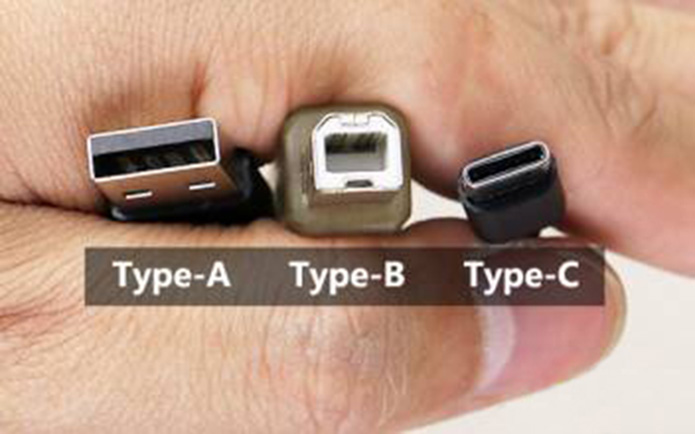What is USB TYPE-C (on)
USB TYPE-C, is two words, first USB, that it is issued by the USB-IF interface standard. Followed by TYPE-C, C is the physical version of the interface version, relative to TYPE-A, TYPE-B in terms of the upgraded version. As USB3.1 is relative to USB2.0, USB1.0 upgraded version of the same, but, 1,2,3 Arabic digital version number, is relative to the interface data transfer protocol, the higher the data transfer rate fast. A, B, C is relative to the interface of the physical form of the provisions. Over the past 10 years, A port is the most common consumer, that is the ordinary computer that USB port, known as the A port female, corresponding to the plug, known as A mouth male head, A port is the main role as Data and power of the downstream port, that is, with A port mother of the device, in terms of power, the power supply equipment (TYPE-C known as the SRC or SOURCE), the data transmission, the HOST (TYPE-C For DFP, the DownStream Face port). B port, in turn, belong to the electricity side (TYPE-C in the SNK or SINK), the data transmission is Slaver (TYPE-C of the UFP or UPStream Face port). The beginning of the release of the B port, is a square, do more industrial applications, because the volume is large, and has released the Mini USB and Micro USB, Micro USB form of the B port, as now Andrews phone standard . The USB-IF launched C port purpose, it is the A port and B port together, so that a port, both can play HOST, but also can play SLAVER.

TYPE-C changes include:

-
First, the power transmission function differences. USB Typc-C is characterized in that all devices that support the TYPE-C interface standard can declare to the other side of the connection the intention of using VBUS via the level of the CC pin in the interface specification, and the stronger will VBUS output voltage and current, the other is to accept the VBUS bus power supply. In order to be able to use this bus definition more. Type-C interface chip (such as LDR6013), the general characteristics of the device from the power supply is divided into five roles: SRC, TRY.SRC, DRP, TRY.SNK, SNK, these five roles occupy the VBUS bus will reduce the order. Which SRC is equivalent to the adapter, will continue to want to VBUS output voltage, TRY.SRC is equivalent to mobile power, only when the case of the adapter, to give up the output VBUS, DRP is equivalent to a laptop computer can accept the adapter to provide power for charging, You can also output power to the phone charge. TRY.SNK is equivalent to mobile phones, under normal circumstances, look forward to the other side to their own power supply, but encountered weak than their own equipment, such as U disk, it is also reluctant to the other output, SNK is not the output power, Battery device, or no battery device, such as u disk, mouse, Bluetooth headset. This is the so-called CC LOGIC. In CC LOGIC, the most difficult to do is mobile power. Because the user requires mobile power to charge all the equipment to be able to accept the charge, including laptops. The market is part of the laptop's CC logic is TRY.SRC, such as Chromebook, Huawei's Matebook and so on. As a result, appeared on the market part of the mobile power can not charge notebook computer problems, often mobile laptop battery charge in turn. CE-LINK engineers in the mobile power design stage to encounter this problem, and whom plagued. And later found a LDR6013, finally solved the problem. And let CE-LINK carry LDR6013 the TYPE-C mobile power, becoming the first mass production on the market, and get the international customer approval TYPE-C mobile power products.
Second, the data transmission function differences. The traditional USB interface, the general internal only one business processing unit, such as USB3.0 processing chip, USB2.0 processing chip. The TYPE-C interface, allowing up to three groups of business processing unit, through the control of the analog switch, while supporting two sets of data transmission services (a USB3.0, a group of USB2.0) plus a group of HDMI signal transmission services. Or any combination of three. Therefore, a TYPEC interface can support up to three groups of transmission plus a group of power supply, a total of four kinds of functions.
-
Third, the power and data transmission performance differences. USB TYPE-C supports positive and negative plug, because the pros and cons have a total of four groups of power and ground, the power support has been greatly improved, the maximum support 20V, 5A 100 Watt transmission capacity. Will bring the traditional use of electrical power supply revolution. And also has both male and female seat two layers of complete metal protective shell EMC protection, so that the transmission speed can rise to a maximum of 40G.
-
In addition to the domination of the handheld device interface, the future of home power supply system, TypeC will occupy an important position, with the popularization of low power technology, household appliances, in addition to refrigerators, air conditioners, washing machines, hair dryers , Other appliances can use the USB TPYE-C power supply, both convenient and safe, thus, DC home power supply is no longer on paper. If you want to know the detailed definition of the TYPE-C port, and the use of details welcome the concern "USB TYPE-C is what a ghost? (under)"
If you are interested in this article, please join us at C-FORCE
WeChat:1 3 5 1 0 1 9 1 2 6 9

